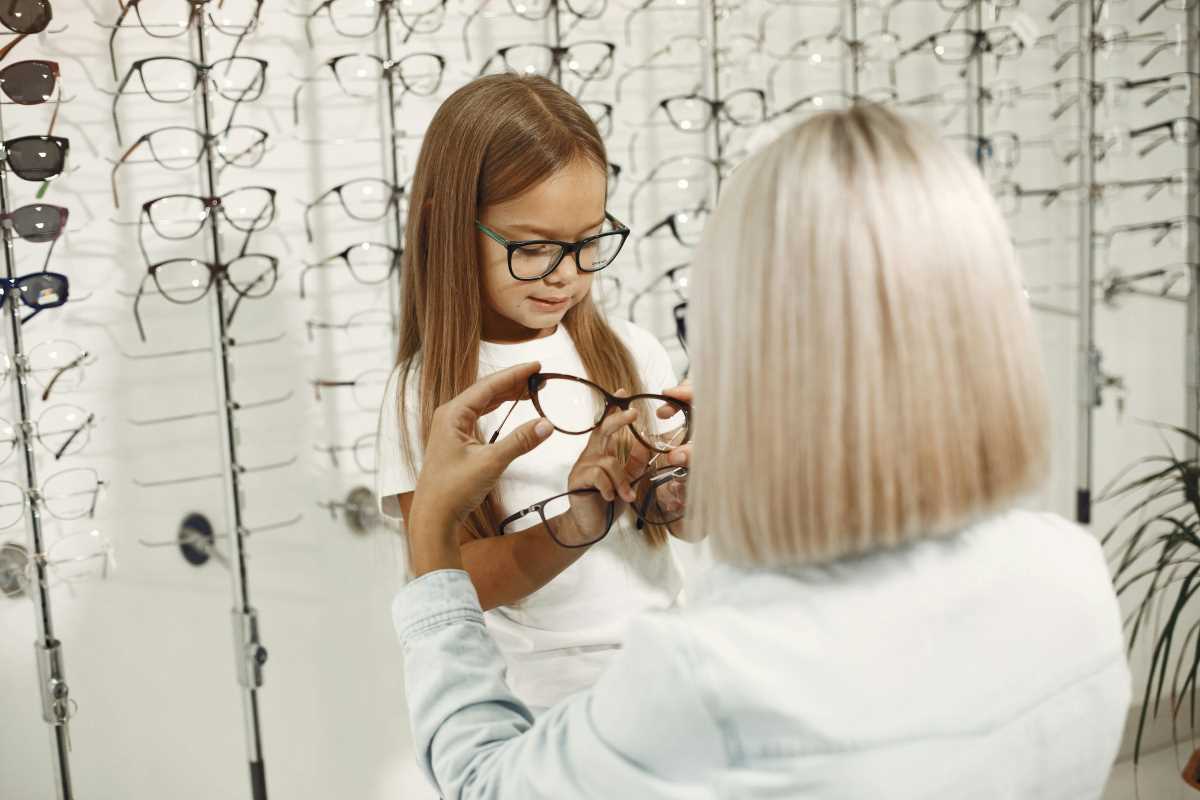A child’s vision plays a vital role in their learning, development, and overall quality of life. Since young children often don’t realize they’re experiencing vision problems, it’s up to parents, caregivers, and educators to recognize the signs. Detecting issues early can make a significant difference, as many vision problems can be corrected or managed more effectively when treated in their early stages. Here’s a closer look at the signs that may indicate your child is experiencing vision trouble and what you can do about it.
Recognizing Common Symptoms of Vision Issues
Children rely heavily on their eyes to explore the world and understand their surroundings. However, identifying vision problems in a young child can be challenging, as they may not be able to articulate their difficulties. Keep an eye out for these common signs and behaviors that could suggest vision troubles:
1. Squinting
If your child frequently squints, they may be trying to adjust their focus to see clearly. Squinting can indicate nearsightedness (difficulty seeing far away) or farsightedness (difficulty seeing up close). It’s often a way for children to minimize distortion or blur in their vision.
2. Sitting Too Close to Screens
Does your child often sit very close to the TV, hold a tablet or phone just inches away from their face, or lean in close to their books? This behavior might be a sign of nearsightedness. Children with poor distance vision may instinctively move closer to objects to see them clearly.
3. Frequent Eye Rubbing
While occasional eye rubbing is normal, excessive or frequent rubbing could indicate visual fatigue, eye strain, or underlying problems such as dry eyes or allergies. If this happens persistently, it’s worth monitoring.
4. Tilting or Turning Their Head
Children with vision issues may tilt their heads or turn them to the side to see better. This behavior might result from astigmatism (a curvature of the eye’s lens) or a muscle imbalance that affects their ability to focus properly.
5. Poor Hand-Eye Coordination
Vision troubles can hinder a child’s hand-eye coordination, affecting their ability to perform tasks like catching a ball, stacking blocks, or coloring within the lines. Difficulty with these motor skills may point to depth perception or tracking issues.
6. Covering One Eye
A child who covers one eye when focusing on something might be compensating for vision problems in the other eye. This behavior could indicate amblyopia (commonly known as lazy eye), which affects visual development.
7. Complaints About Headaches or Eye Pain
If your child frequently complains of headaches, particularly after reading or doing schoolwork, it could result from eye strain. Similarly, eye pain or discomfort may suggest focus issues or underlying vision problems.
8. Avoiding Certain Activities
A child with undetected vision problems might gravitate away from tasks that require focus, such as reading, drawing, or playing certain games. They might also exhibit frustration while performing these tasks or give up easily.
9. Struggling in School
Vision troubles can have a significant impact on a child’s academic performance. If your child is falling behind in reading, writing, or concentrating in class, it might not be a motivation issue—it could be due to difficulty seeing the chalkboard, print, or digital materials.
10. Unusual Eye Movements
Pay attention to your child’s eyes when they’re focusing on objects. If you notice wandering eyes, misaligned eyes, or one eye drifting inward or outward, these could be signs of strabismus (misaligned eyes), which requires prompt professional evaluation.
How Vision Issues Affect Learning and Development
Undiagnosed vision problems can interfere with a child’s ability to learn and thrive. Vision plays a key role in processing information, especially in classroom settings, where reading, writing, and observing are frequent activities.
Children with poor vision may become frustrated or discouraged, leading to lower confidence and decreased participation in activities. Furthermore, untreated vision issues like amblyopia or strabismus can worsen over time, causing further developmental complications. Detecting and addressing these challenges early ensures a better chance of normal visual development and academic success.
When to Seek Professional Help
If you observe any of the signs mentioned above or have concerns about your child’s vision, schedule an eye exam with a pediatric optometrist or ophthalmologist. Here are some scenarios when professional help is critical:
- Your child exhibits persistent symptoms, such as squinting, covering one eye, or frequent headaches.
- You notice obvious misalignments or abnormal eye movements.
- Your child is struggling with schoolwork or avoiding activities that require focus.
Pediatric doctors generally recommend that children receive their first comprehensive eye exam between 6 and 12 months old, with follow-ups at age 3 and before they start kindergarten. Routine exams help ensure any issues are caught and treated early.
Preventive Measures for Eye Health
While not every vision issue can be prevented, you can take steps to promote your child’s eye health and reduce the risk of complications:
- Encourage Screen Breaks: Limit screen time and teach your child the “20-20-20” rule—every 20 minutes, look at something 20 feet away for at least 20 seconds.
- Provide Proper Nutrition: A balanced diet rich in fruits, vegetables, and omega-3 fatty acids supports good vision. Foods like carrots, spinach, and fish are especially beneficial.
- Use Protective Eyewear: If your child participates in sports or outdoor play, ensure they wear goggles or glasses that protect their eyes from injury.
- Schedule Regular Eye Exams: Even if no issues are apparent, regular check-ups can detect subtle vision problems before they become more severe.
The Importance of Early Detection
Early detection of vision problems is essential to protect your child’s visual development and overall well-being. Many issues can be corrected with glasses, therapy, or other treatments if caught in time.
By staying vigilant and proactive, you can ensure your child has the best possible start to a lifetime of healthy vision. If you suspect your child has vision troubles, don’t hesitate to reach out to a professional—it could make all the difference in their growth, learning, and happiness.







